Showing 1–12 of 28 results
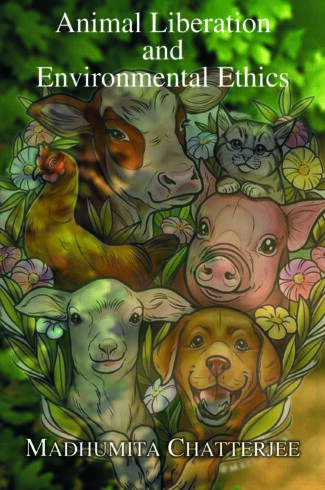
This book talks about the numerous philosophical perspectives and social awareness that man need to practise for keeping his relationship with the entire ecosystem vibrant. Animals deserve human sympathy and rightful treatment and should enjoy freedom, and get liberated from the tyranny of man.
“This book delves deep into the numerous philosophical perspectives that man should keep his relationship with the entire ecosystem vibrant. It thus deliberates on man’s treatment to animals from a multidimensional framework as a food choice, fun and sports, and also his unbridled consumption of natural resources. Animals deserve a sympathetic and compassionate treatment from man and they should enjoy certain rights and privileges which man cannot supersede. Man should show empathy to the animal life. Animals indeed deserve freedom and liberation from the tyranny of man, especially from the West’s philosophy of the Biblical attestation of “man is the crown of creation” and therefore he enjoys absolute right over the animal kingdom.
It also discusses the history of human anthropo-centric culture, environmental philosophy of the East and West, and introduces the myriad topics relevant to environmental ethics like deep ecology, social ecology, ecofeminism, biocentrism, shallow environmentalism and the theory of universal consideration. It further calls for the need to conceptualize man in a wider cosmic-ecological perspective, and expects a paradigm shift from anthropomorphic instrumentalism to non-anthropocentric ethical posture, for him to have ultimate freedom and happiness. It also suggests a philosophical counter-revolution.
The book should initiate man, it is hoped, in the art of making self-enquiry, reminding him that non-human living organisms and the environment per se do play a pivotal role in sustaining his life on this planet.”

Focussing on the ecological systems in the mountains, forests and islands vis-a-vis the hitherto-adopted modes of aggressive development, these articles underscore the urgency of changing the modern lifestyles, befriending Nature and returning to wisdom tradition.
Urbanization. Industrialization. Market Economy. Technocentric Lifestyles. Degenerated Consumerism. Air, Water and Land Pollutions. These are some of the tell-tale expressions, recurringly surfacing in the concerns about ecological disturbances across the continents. Today, however, as we are headed for an ecological disaster, there is not only a growing awareness against the cornucopian technocentrism, but also a far-stretched disillusionment with the one-way exploitative, economic development. And even the national planners are being questioned: Can the law of a nation supersede the Law of Nature? Should the rights of the people be allowed to be destructively manipulated by the rules of power? Must the wisdom-tradition of our ancestors be shelved to accomodate the flagrant hypocrisies of the Planning tradition? As a part of the Unesco Chair activities at the Indira Gandhi National Centre for the Arts, a Conference: 13-16 October 1995, New Delhi, involved some of the highly reputed scholars in a stimulating dialogue on the Cultural Dimension of Education and Ecology. Its presentations are now offered in two volumes: setting out independently the Cultural Dimension of (1) Education, and (2) Ecology. Focussing on the ecological systems in the mountains, forests and islands vis-a-vis the hitherto-adopted modes of aggressive development, the 15 articles here underscore the urgency of changing the modern lifestyles, of befriending Nature and, above all, of returning to wisdom-tradition. Also included here are case-studies highlighting the aspects of culture that are being lived in the day-to-day lives of people even today! This collection is invaluable to environmentalists, social activists, economic planners, policy-makers, and cultural scholars working for the revival of traditional wisdom.
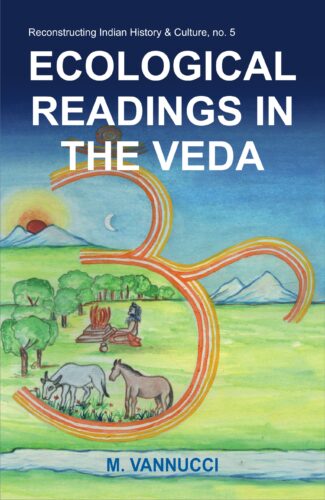
Dr. Vannucci, exploring the ecological validity of the Vedas, interprets the Vedic verses to decipher the ancient code with a bio-ecological key. She makes a comparative study of Vedic ecology and its contemporary world-view.
The Vedas are indisputably among the oldest of mankinds documents. Which Dr. Marta Vannucci rummages through to address a highly enigmatic question: How man evolved as Man: thinking, discriminating, thought-communicating? Or, yet more specifically, how did he come to identify cause-effect relationships of living-beings: both among themselves and with their environment? In looking for answers, she discovers profound biological, physiological, and ecological insights in Vedic writings which she projects here, with coherent analyses and prolific textual references. Dr Vannucci, who has studied Indian sacred texts for about twenty years, is perhaps the first ever biologist to explore the ecological validity of Vedas. With her critical Florentine mind and five-decade-long involvement in scientific methodologies, she interprets the complex Vedic verses in her thematic effort to decipher the ancient code with a bio-ecological key -spelling out, contextually, the Matter-Energy principles (embodied in Lord Agni) and Life-Hope principles (personified by Lord Savitr). Also setting out a comparative perspective on Vedic expressions of ecology and its contemporary worldview, the author suggests that the essential difference between the two stems not from the perception of reality, but from the manner of their theorizing. It is a painstakingly documented work, with a large-scale glossary of Sanskrit/ technical words and extensive bibliographic references. And also a foreword by a cultural scholar of Dr Kapila Vatsyayans eminence.

ßEconomics and Natureû is a versatile attempt at analysing the present-day global economic scenario in the backdrop of time-tested economic theories and ancient thought. While focusing on issues that have resulted in economic quagmire, the book attempts to provide veritable solutions.
The book, adopting a fresh approach, addresses the economic travails in the contemporary global scenario and presents a search for solutions to the economic quagmire based on arguments relying on common sense and understanding of human nature. It analyses the views of thinkers and economists including Kautilya of the ancient India, ideas of John Maynard Keynes and Milton Friedman, and other highly acclaimed economic theories to discuss ideal economic concepts. Looking at the past for economic wisdom and taking clue from the laws of nature which ensures that imbalances do not persist for long, the articles in the volume deal with matters of deep concern in the present-day global economic scenario and ways to address them. The volume, informative, interesting and insightful, is bound to be useful to economists as well as general readers.

ßEconomics and Natureû is a versatile attempt at analysing the present-day global economic scenario in the backdrop of time-tested economic theories and ancient thought. While focusing on issues that have resulted in economic quagmire, the book attempts to provide veritable solutions.
The book, adopting a fresh approach, addresses the economic travails in the contemporary global scenario and presents a search for solutions to the economic quagmire based on arguments relying on common sense and understanding of human nature. It analyses the views of thinkers and economists including Kautilya of the ancient India, ideas of John Maynard Keynes and Milton Friedman, and other highly acclaimed economic theories to discuss ideal economic concepts. Looking at the past for economic wisdom and taking clue from the laws of nature which ensures that imbalances do not persist for long, the articles in the volume deal with matters of deep concern in the present-day global economic scenario and ways to address them. The volume, informative, interesting and insightful, is bound to be useful to economists as well as general readers.
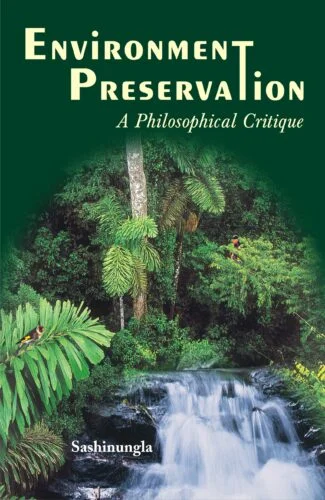
The dominant ethical understanding and its preservation strategy is erroneous in itself to serve us with a more evaluative ethics to the present environmental crisis because its idea of Nature itself can also tend to be limited. The author explores the traditional tribal understanding of the close correlation between man and his environment for a new dialogue in philosophy.
In an integrated and comprehensive framework, Environment Preservation: A Philosophical Critique takes a critical look at the increasing literatures and specific attempts at environmental preservation. The dominant ethical understanding and its preservation strategy, according to the author, is erroneous in itself to serve us with a more evaluative ethics to the present environmental crisis because its idea of Nature itself can also tend to be limited. The author turns away, therefore, from the sole western anthropocentric polemic and explores the traditional tribal understanding of the close correlation between man and his environment for a new dialogue in philosophy. The book will be imperative both to students at various undergraduate and post-graduate levels as well as to researchers. It will also interest anyone who wants to delve deeply into the philosophical issues of Nature preservation..

The book deals with silviculture and the management of spruce and silver fir forests in western Himalayas, along with the history of artificial regeneration methods developed and implemented, the detrimental factors that affect regeneration, and effectiveness of dedicated efforts undertaken so far.
Spruce and silver fir forests play a quintessential role in environmental conservation in the eco-sensitive zone of western Himalayas forming catchment areas of many important rivers originating from and flowing through these mountainous areas. Working these forests under different silvicultural systems tried to develop suitable silvicultural treatment for these forests did not prove satisfactory, and appropriate silvicultural and management practices remain to be developed.
Overexploitation of these forests in several areas resulted in serious soil erosion and environmental problems. Sustainable management of spruce and silver fir forests is critical for environmental conservation in this region.
The book deals with past management of spruce and silver fir forests in western Himalayas, problems in regenerating these forests and artificial regeneration methods developed and adopted. It also vividly analyses the impacts of different management practices on the effectiveness of these forests in environmental conservation. The book should enthuse environmental conservationists, nature lovers and researchers interested in the study of the Himalayas.
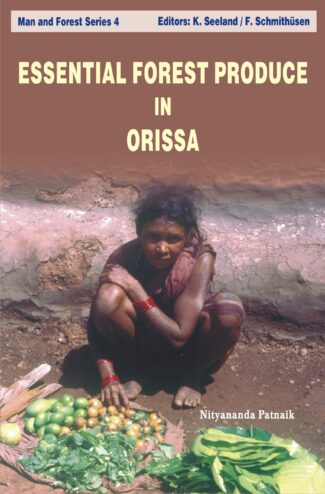
Presenting a comprehensive product profile of Orissas forests, the volume studies reasons for underutilization of the states essential forest produce by tribal communities and proposes measures to help tribals reach this forest resource and thus strengthen their economy.
This volume is the 4th in the ongoing Man and Forest series a series trying to highlight the relevance of indigenous knowledge of various tribal communities in the sustainable management of forests and local resources more specially against the growing challenges of economic development vis-à-vis environmental hazards and a declining resource base. Orissas forests, covering a little over 57,000 sq km (or 36.72% of the states geographical area), are known to have a profusion of minor forest produce (MFP) which has been upgraded due to its importance for tribal livelihood and is called Essential Forest Produce (EFP) through the book. It comprises simple fodder and fuelwood to baffling medicinal herbs, besides numerous economically important plants yielding dyes, tannin, fibres, flosses, essential oils, edible fruits, seeds, leaves, honey among many other items. Yet, despite its enormous economic potential, about three-fourths of this forest wealth has so far been unutilized by the tribal communities largely because of its inaccessibility. With a holistic product profile of Orissas forests, an eminent anthropologist here looks for the rationale behind the vastly deficient utilization of its EFP identifying the entire range of causes: from the tribals incapacity to reach this forest resource to their exploitation by middlemen/traders/moneylenders to the larger forest policy issues. Dr Patnaik also proposes measures which would help tribals not only to actualize the inherent potential of EFP but, in turn, strengthen their economy as well. It is a painstaking empirical study of interest to social anthropologists, environmental activists, foresters, development economists, forest resource economists planners and policy-makers.

The book discusses the history and importance of ethnobotany with specific reference to certain tribes of the Odisha state. It provides the cross-cultural comparative ethnobotanical descriptions of 210 species of plants used by the communities for various purpose.
Understanding the ecological knowledge of tribal and rural societies is necessary to conserve and sustain natural resources. This volume discusses the history and importance of ethnobotany with specific reference to four tribal communities of Odisha, India. It begins with an account of the nature of the tribes involved in the study. Based on participatory fieldwork, it presents an insider’s account of the tribal culture and its relationship with plants. It provides the ethnobotanical descriptions of 210 species of plants belonging to 77 families, presenting their local names, origin and the medicinal, cultural, culinary, economic, ecological uses of the species. It takes up study of the plants used by tribes in the drug-based and spiritual healing processes elaborating the philosophies behind knowledge transmission such as divination, hereditary, discipleship and kinship. Related aspects such as disease diagnosis, diet restrictions and rituals are depicted in detail. There is a special chapter on forests and non-timber forest products (NTFPs) that details the efforts of communities in forest conservation, their land-use patterns, forest classification systems, list of NTFPs and their harvest-consumption patterns. It also deals with the role of NGOs, middlemen and government agencies in this. Throughout, the emphasis is on the philosophical relationship of the communities with their ecosystem.
The book would prove extremely useful to policy-makers, academicians, social workers and general readers looking forward to accompany the tribal communities towards ethno-sensitive development.
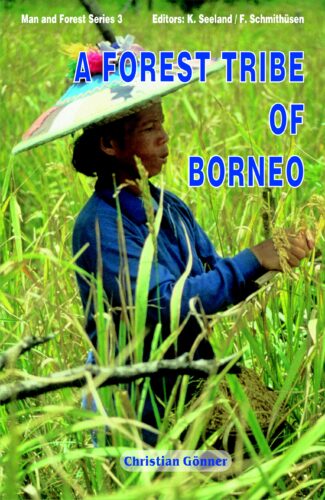
Christian Gnner takes the reader to the Dayak Benuaq village of Lempunah in Borneo (Indonesia), offering an insightful analysis of the resource use patterns of the local tribal population covering swidden agriculture, mixed forest gardens, rattan gardens, rubber gardens, and the non-cultivated forest in-between and temporal and spatial aspects of life.
Here is the third volume in the series Man and Forest: a series trying to highlight the relevance of indigenous knowledge of various tribal communities in the sustainable management of forests/local resources against the growing challenges of environmental hazards and a declining resource base. The volume takes the reader to the Dayak Benuaq village of Lempunah in Borneo (East Kalimantan, Indonesia) where, for over three hundred years, the local tribal population has made extensive use of its forest resources. More than a hundred locally-differentiated rice varieties and 150 other crops are cultivated over a mosaic forest of 9,200 ha. Besides maintaining a high level of bio-diversity, Lempunah villagers are managing an enormous reservoir of flora and fauna for their extended subsistence economy, including trade with various forest products over long distances. Market fluctuations and other uncertainties here are coped with by resource diversification and a high dynamic flexibility in switching between the use of resources. Together with vivid descriptions, Christian Gonner offers an insightful analysis of local resource use patterns, covering swidden agriculture, mixed forest gardens, rattan gardens, rubber gardens, and the non-cultivated forest in-between and temporal and spatial aspects of life in Lempunah. Christian Gonner has, for this study, applied ethnological, ecological, and geographical field-research methods.

This is the sixth monograph in the series Man and Forest and the second volume to deal with an Aboriginal tribe of Orissa. The authors, after ten years of intensive research, give an account of how the Kuttia Kondh, a tribal community in transition, classify the components of nature, and of their social organisation, religious beliefs, etc.
In the management of renewable resources, forests have undeniably a vital role, and today, as never before, their conservation is an urgency. In view of this dire necessity the series Man and Forest tries to highlight the relevance of indigenous knowledge of various South Asian tribal communities in the sustainable management of forests/local resources more specially against the growing challenges of economic development vis-a-vis environmental hazards and a rapidly declining resource base. A scientific inquiry into indigenous knowledge is an effort to discover/rediscover the tribals traditional modes of production and conservation. For them it is the only source to cope with the problems of modernity affecting their lives and precarious environments. Forest Tribes of Orissa: The Kuttia Kondh is the sixth monograph in the series Man and Forest and, after the publication of an account of the forest world of the Dongaria Kondh in 2002, the second volume to deal with an aboriginal tribe of Orissa. Being a tribal community in transition, the authors have tried to document and thus safeguard its local traditional knowledge of conservation, use and management of forests and natural resources. They give an account of how the Kuttia Kondh classify trees and other plants, hills, forests, crops and animals. Their subsistence economy, agricultural system, social organization, religious beliefs and other important socio-cultural aspects of forest life have been extensively treated. The lifestyle of this tribal community is finally reflected on the background of forest policy and the impact it has on their livelihood. The present book is, as most of the volumes in the series, the outcome of nearly ten years research venture involving an interdisciplinary, intercultural team of sociologists, ethnobotanists, social anthropologists and other social scientists.
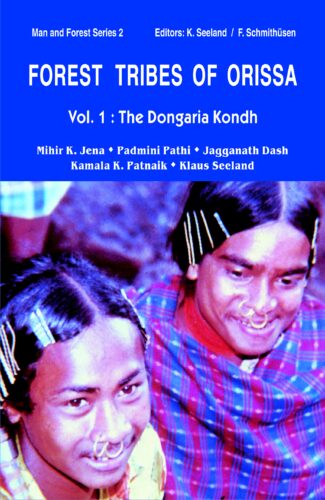
The study documents the Dongaria Kondh tribal communitys traditional knowledge of their natural environment: how they classify trees, plants, hills, forests, crops and soils and how they have been managing their forests. Meticulously delineated are the Dongarias geographical landscape, economy, socio-political organisation, oral traditions and other socio-cultural aspects.
In the management of renewable resources, forests have undeniably a vital role and today, as never before, their conservation is an urgency. In view of this dire necessity, the series Man and Forest tries to highlight the relevance of indigenous knowledge of various South Asian tribal communities in the sustainable management of forests/local resources more specially against the growing challenges of economic development vis-a-vis environmental hazards and a rapidly declining resource base. A scientific inquiry into indigenous knowledge is an effort to discover/ rediscover the tribals traditional modes of production and conservation. For them it is the only source to cope with the problems of modernity affecting their lives and precarious environments. Forest Tribes of Orissa: The Dongaria Kondh is the second book in the series of monographs of Man and Forest, and the first focussing on a tribal community today caught in the transition between an autochthonous lifestyle and fragments of modernity. The authors attempt to document the Dongarias traditional knowledge of their natural environment; how they classify trees, plants, hills, forests, crops, and soils; and how so far they have been managing their forests. Also meticulously delineated, as a backdrop to this study, are the Dongarias geographical landscape, economy, socio-political organisation, oral traditions, belief cosmos, and other relevant socio-cultural aspects. The present book is, as most of the volumes in the series, the outcome of nearly ten-years research venture involving an interdisciplinary, intercultural team of sociologists, ethnobotanists, social anthropologists and other social scientists.
| There are no products |